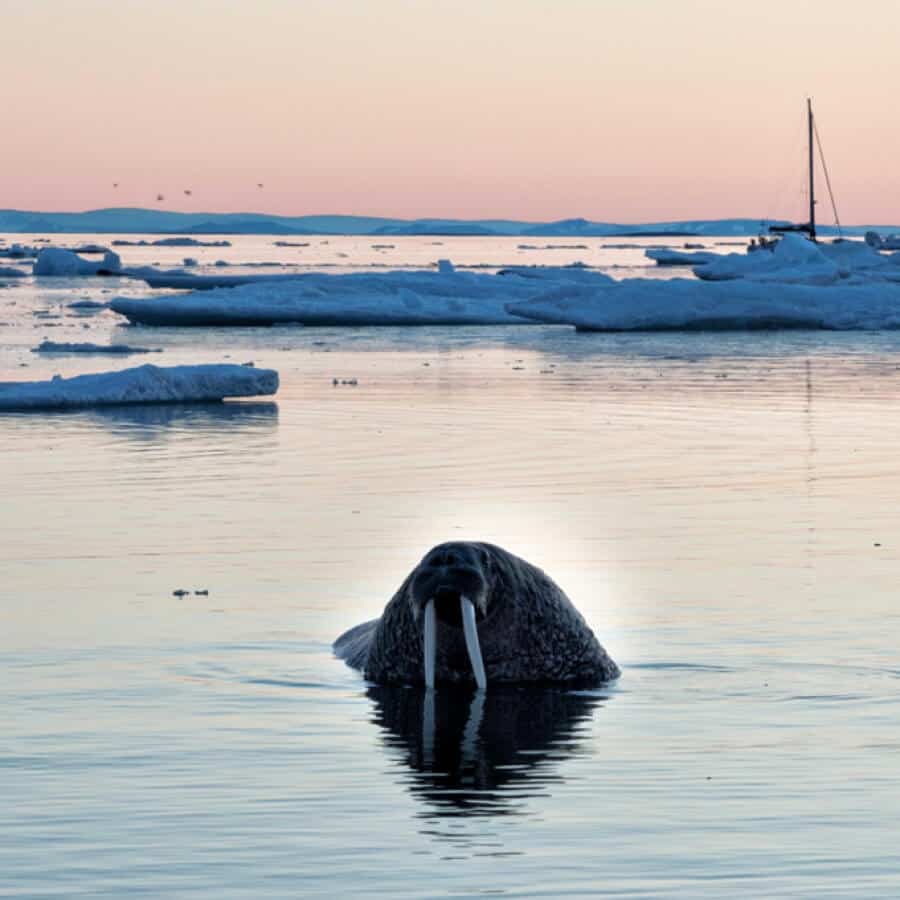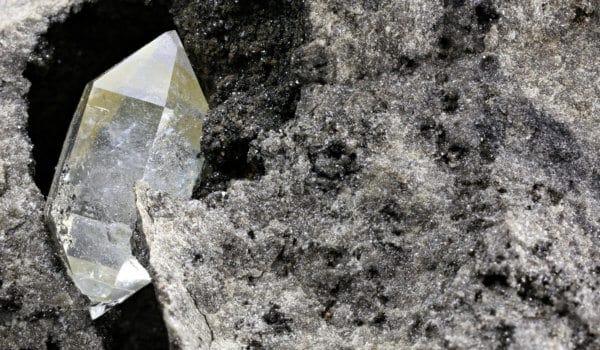This is the final number in a series of articles from the Russian explorer Ivan Kutasov and his Arctic expedition to the Svalbard archipelago. It will tell about a small island which lies beyond the Arctic Circle which could turn out to be either a shelter from rough weather or a mortal danger.
Our last week on Spitsbergen was particularly eventful, as we spent a few days on the second largest island in the Archipelago – the North East Land (Norwegian: Nordaustlandet).
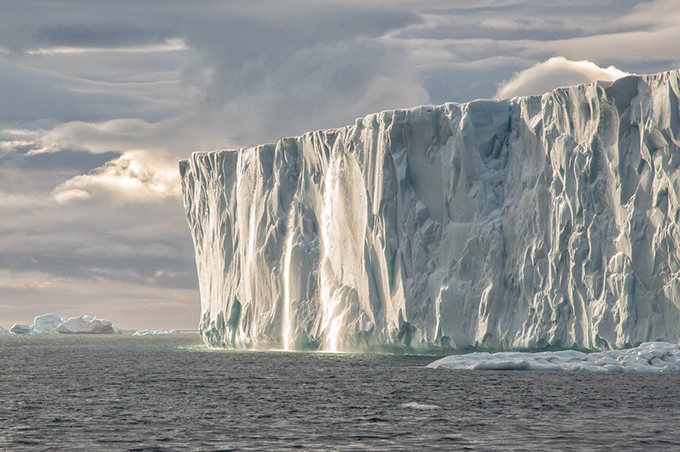
Autor photo Ivan Kutasov
The island is uninhabited, and 76% of its territory is covered with glaciers, which sometimes reach 500 meters in height. The landscapes are fabulous! We also visited a few rookeries of walruses. These are, probably, the most picturesque sights on the whole Archipelago. Here we began to prepare the yacht for the return journey across the ocean, and having waited for agreeable weather conditions, on September 1 we left Spitsbergen.
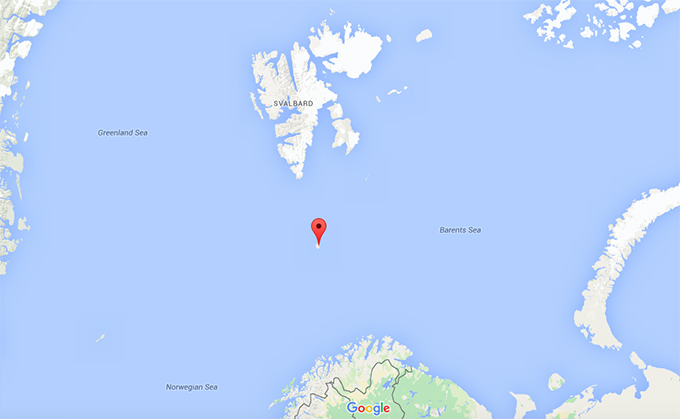
Google Maps
I would like to tell you the story of Bear Island, which lay directly in our path at 74°31′N 19°01′E. It is a small island which is situated beyond the Polar Circle (its area is just 180 square kilometers), and it lies half way between Spitsbergen and the northernmost point of Europe – North Cape, approximately 300 nautical miles in each direction. The island lies between two seas, bounded by the Barents Sea in the east and the Norwegian Sea in the west. In fact, it is the only place where you can rest and take shelter from bad weather during the long and exhausting crossing from Svalbard to the Mainland. There are many bays, though quite small, where you can hide from any wind.
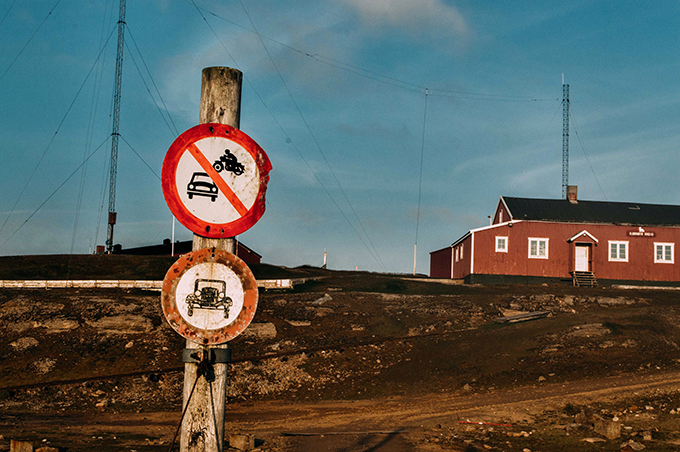
Autor photo Ivan Kutasov
The island was discovered by chance in 1596 by a Dutch expedition led by Willem Barents and Jacob van Heemskerk, during their search for the path to the West Indies through the northern seas. Willem Barents named it the “Bear”, because a polar bear tried to climb on their vessel near this island. It now belongs to Norway, just like Spitsbergen. There is a weather station, and about 10 scientists reside there permanently.
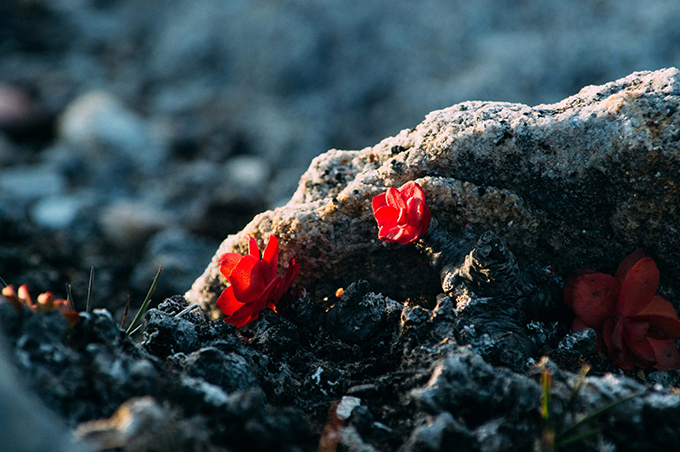
Autor photo Ivan Kutasov
Despite the fact that the name of the island is the “Bear”, actually bears are very rarely found there, especially in the summer. The last one was seen 20 years ago; apparently, they are unable to reach these shores; besides, the local climate is a lot warmer (when we approached the island, the thermometer showed +4° C). Despite the fact that we contacted the weather station on the radio, we were strongly advised to take along rifles when going ashore. The local scientists met us rather warmly, because a tourist is a “rare bird” in this part of the world. The weather station consisted of a few well-kept buildings and even a helicopter hangar.
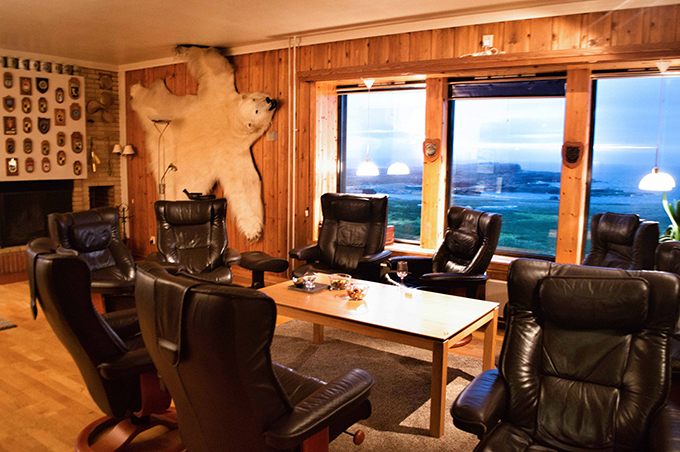
Autor photo Ivan Kutasov
We were amazed at the excellent conditions which had been created for the workers, including a large lounge with a great view, a fireplace and leather armchairs, and, certainly, a great selection of board games, books and movies. The station also had a gym. What else is there to do during the lengthy polar nights, which are significantly shorter than the ones on Spitsbergen (from November till February)? All buildings are interconnected by a corridor, which slightly reminded us of space stations, as they are depicted in the movies.
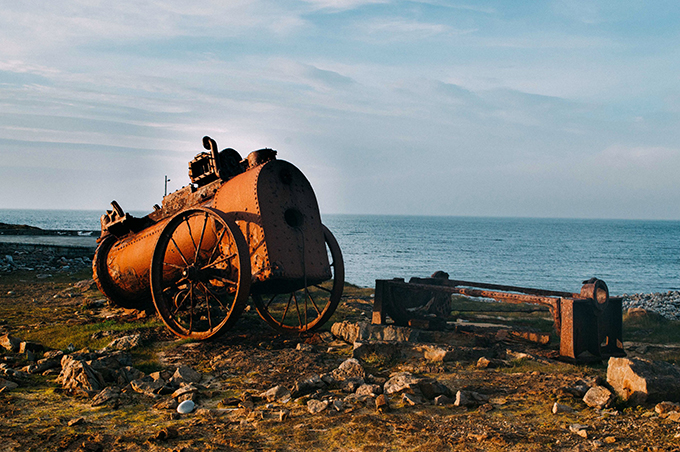
Autor photo Ivan Kutasov
Here are some facts: in 1989 a Russian submarine, K-278 “Komsomolets”, sank near the island because of a fire. Most of crew members died. And in 2009 there was another incident when a second Russian ship, the refrigerated transport vessel “Petrozavodsk”, ran upon the sands not far from the island. The captain was accused of drunkenness on the basis of a blood sample analysis; the captain’s mate was also accused of drunkenness as well as sleeping while standing watch.

Autor photo Ivan Kutasov
Moreover, there have been two air crashes on the island. The first one happened with a German jet (#junkervraket), which crashed in 1942, and in 1954 a tragedy happened with a Norwegian postal plane (#Catalinavrak). The remains of these airplanes are still on the island, and I visited them the next day. The graves of Russian coast-dwellers are situated on the island too.
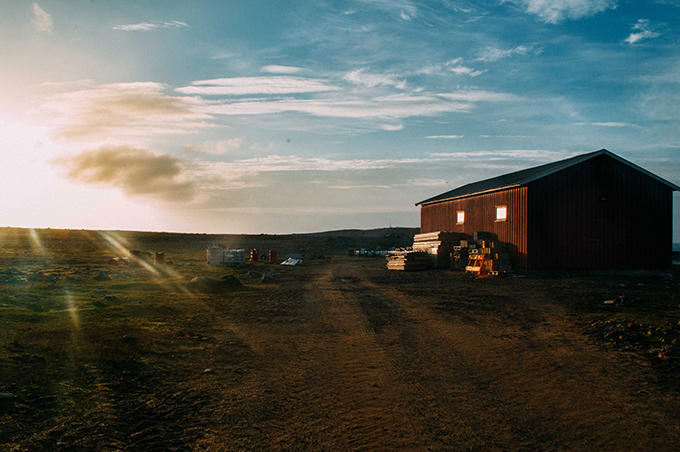
Autor photo Ivan Kutasov
Before leaving Bear Island, I followed local tradition and had a swim in the icy water, for which I was awarded a certificate. That’s how things are on Bear Island…
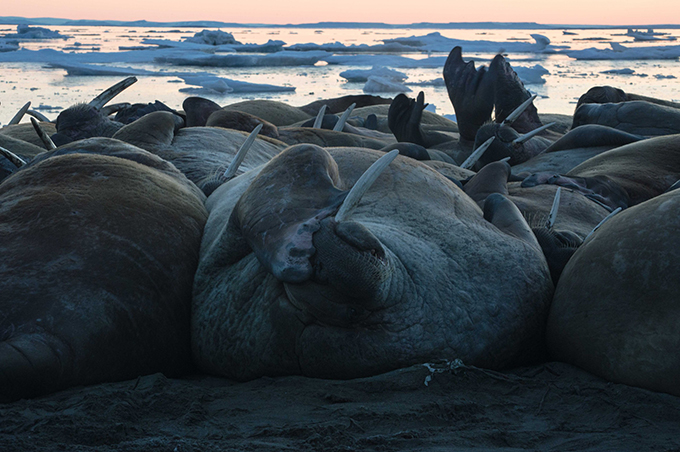
Autor photo Ivan Kutasov
We left the island after two days and on September 5 successfully moored in the port of Hammerfest, where our 3-month-long Arctic expedition, during which we had sailed more than 3000 miles through the Arctic, came to an end.
Adventures of Ivan Kutasov:
A passion for adventure can’t be explained, it is a calling
Fell the atmosphere of the Arctic, beginning of the expedition
Welcome to the land of icebergs
On why one must have a gun and shouldn’t lock doors in Svalbard
Support us!
All your donations will be used to pay the magazine’s journalists and to support the ongoing costs of maintaining the site.
Share this post
Interested in co-operating with us?
We are open to co-operation from writers and businesses alike. You can reach us on our email at [email protected]/[email protected] and we will get back to you as quick as we can.
